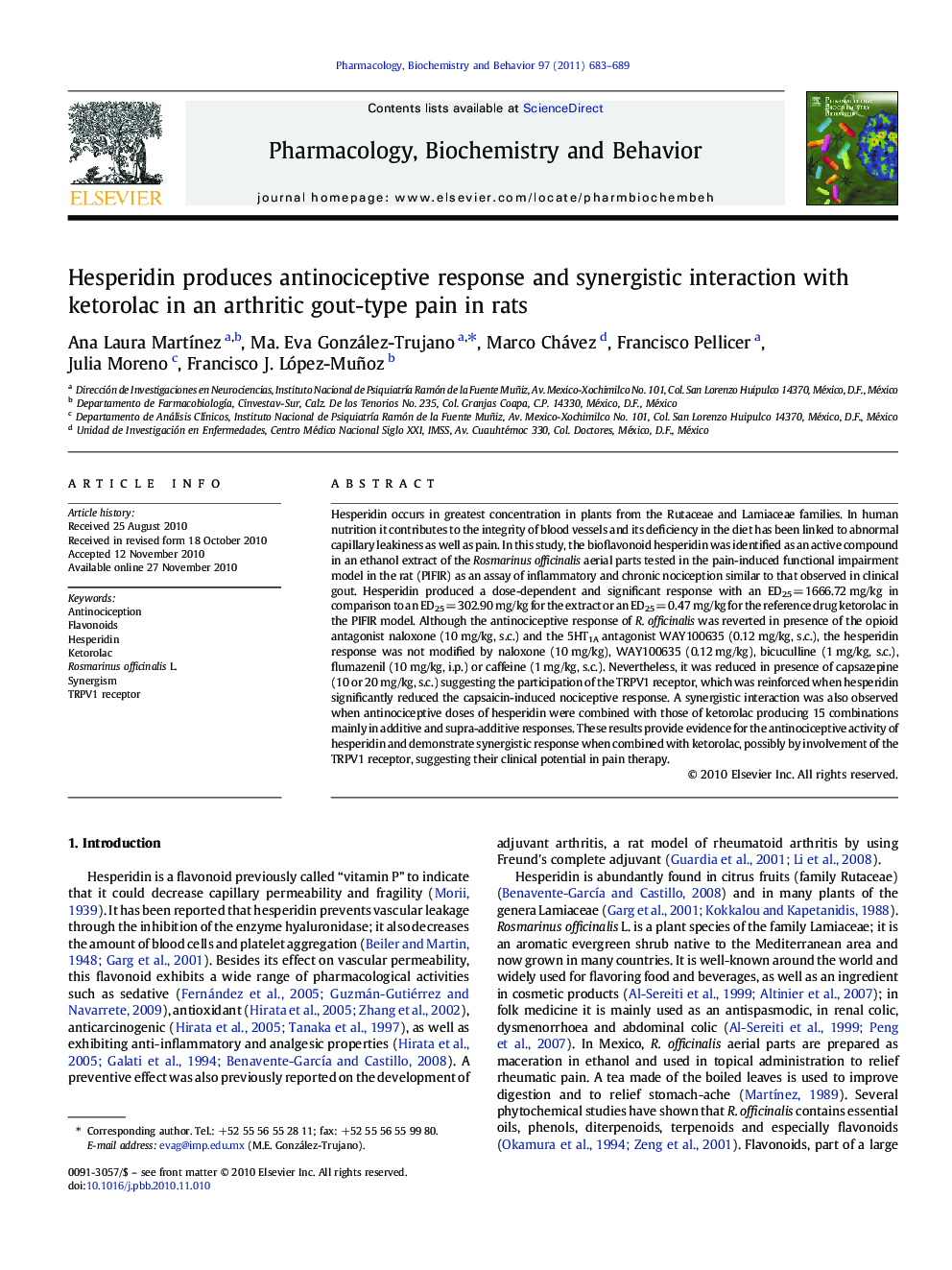| کد مقاله | کد نشریه | سال انتشار | مقاله انگلیسی | نسخه تمام متن |
|---|---|---|---|---|
| 2013417 | 1067112 | 2011 | 7 صفحه PDF | دانلود رایگان |

Hesperidin occurs in greatest concentration in plants from the Rutaceae and Lamiaceae families. In human nutrition it contributes to the integrity of blood vessels and its deficiency in the diet has been linked to abnormal capillary leakiness as well as pain. In this study, the bioflavonoid hesperidin was identified as an active compound in an ethanol extract of the Rosmarinus officinalis aerial parts tested in the pain-induced functional impairment model in the rat (PIFIR) as an assay of inflammatory and chronic nociception similar to that observed in clinical gout. Hesperidin produced a dose-dependent and significant response with an ED25 = 1666.72 mg/kg in comparison to an ED25 = 302.90 mg/kg for the extract or an ED25 = 0.47 mg/kg for the reference drug ketorolac in the PIFIR model. Although the antinociceptive response of R. officinalis was reverted in presence of the opioid antagonist naloxone (10 mg/kg, s.c.) and the 5HT1A antagonist WAY100635 (0.12 mg/kg, s.c.), the hesperidin response was not modified by naloxone (10 mg/kg), WAY100635 (0.12 mg/kg), bicuculline (1 mg/kg, s.c.), flumazenil (10 mg/kg, i.p.) or caffeine (1 mg/kg, s.c.). Nevertheless, it was reduced in presence of capsazepine (10 or 20 mg/kg, s.c.) suggesting the participation of the TRPV1 receptor, which was reinforced when hesperidin significantly reduced the capsaicin-induced nociceptive response. A synergistic interaction was also observed when antinociceptive doses of hesperidin were combined with those of ketorolac producing 15 combinations mainly in additive and supra-additive responses. These results provide evidence for the antinociceptive activity of hesperidin and demonstrate synergistic response when combined with ketorolac, possibly by involvement of the TRPV1 receptor, suggesting their clinical potential in pain therapy.
Research Highlights
► The bioflavonoid hesperidin produces antinociceptive activity in the PIFIR model.
► Hesperidin tested at antinociceptive doses did not cause motor dysfunction in rats.
► TRPV1 receptor is partially involved in the mechanism of action of hesperidin.
► Antinociceptive synergism is obtained when hesperidin is combined with ketorolac.
Journal: Pharmacology Biochemistry and Behavior - Volume 97, Issue 4, February 2011, Pages 683–689